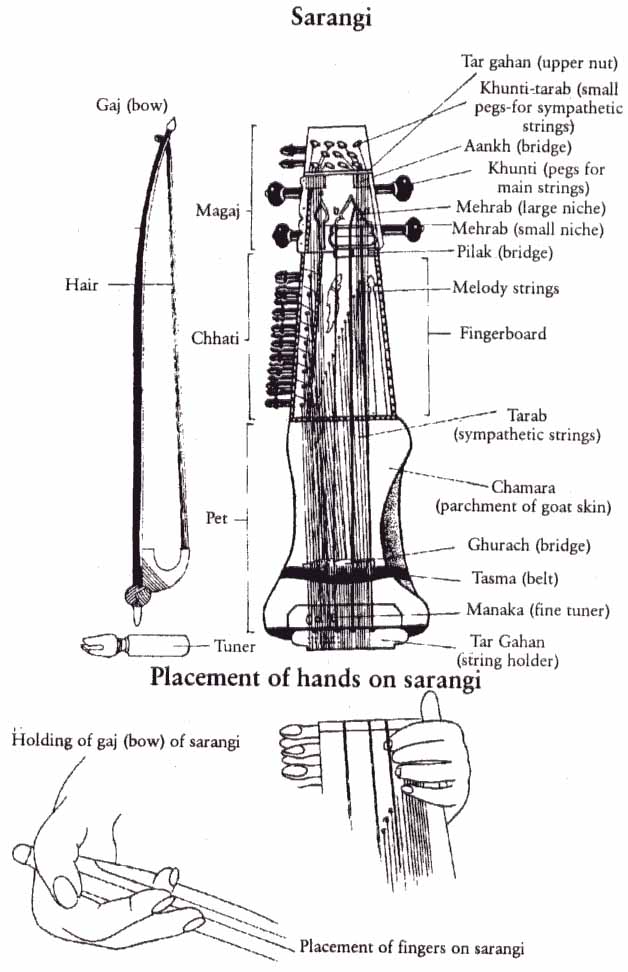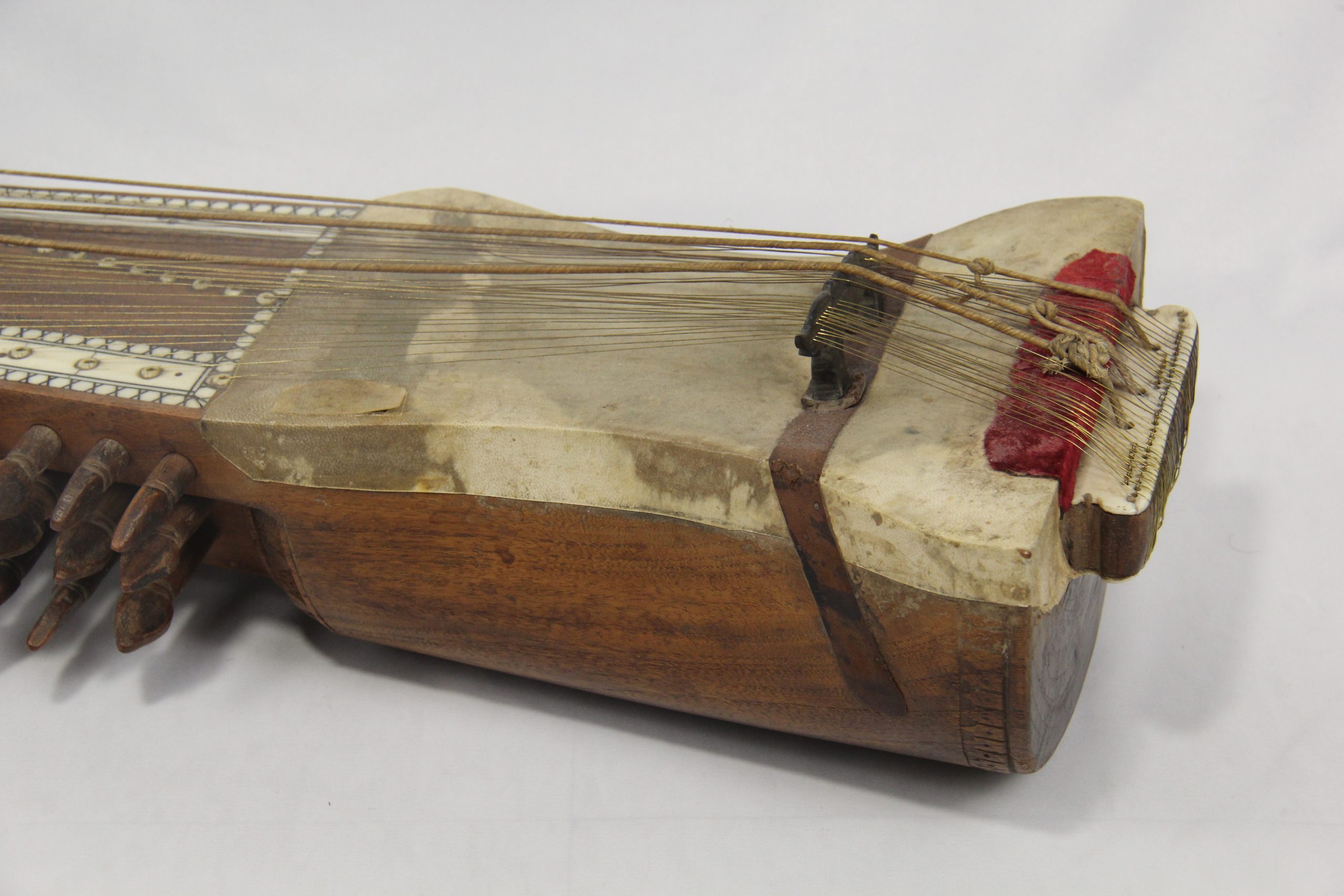Sarangi
Details
- Origin: Jodhpur, India
- Date Made: Likely mid to late 19th, early 20th century
- Collection: DHB 132
Description
Bowed string instrument, wood body, has three main components: the body (resonator), neck, and peg box. Hollowed out body covered with hide, the main bridge (ghurach) is in the middle of the hide and supported by a leather belt (tasma). Tuning pegs on the back and under the neck. Bone nut to hold strings in place. The length of the sarangi is usually between 2ft to 2,25 ft, with a width of about 6 inches and a height of about 4.2 inches. It weighs approximately 2 kg. Typically 4 playing strings made of goat gut, along with 17 sympathetic strings made of steel.
This instrument is said to be able to produce close to all the nuances of the human voice in vocal music. As a result, the instrument has close ties to vocal music, and has often been used as accompaniment for vocal performances. Although it is a very rich and tonally diverse instrument, it was never able to fully make its way into classical music due to its association with dancing and singing performances of women in lower castes. In these performances the dancing or singing was the primary feature, and the sarangi player was almost always in the background.
The sarangi was used for some classical music later, usually as accompaniment for khayal vocal performances. However, the marginal musical and social status of the instrument and its players remained the same, despite the high expectations and difficulty required for its use in a performance setting. In the latter half of the 19th century and the early 20th century, the harmonium and violin began to replace the sarangi as less demanding alternatives occupying a similar tonal range. The instrument began to be used less, but efforts have been made since the early 20th century to revitalize its use as a solo instrument.

Sources
- Kasliwal, Suneera. Classical Musical Instruments. New Delhi: Rupa, 2001.
- “Sarangi.” Met Museum. Accessed June 15, 2022. https://www.metmuseum.org/art/collection/search/503554.







